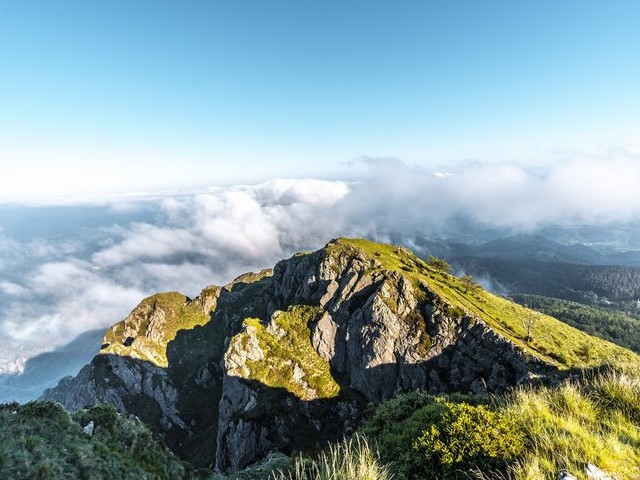Solo Kilimanjaro Trekking Packing Essentials: Your Guide to Conquering the Roof of Africa
Embarking on a solo trek to the summit of Mount Kilimanjaro is not just about challenging your physical and mental limits; it’s a transformative journey that begins with a single step and a well-packed bag. At the Kilimanjaro Centre for Trekking and Ecotourism (KCTE), we understand that what you carry can make or break this incredible adventure. Whether you’re a seasoned hiker or a first-time trekker, equipping yourself with the right gear is crucial to enjoying and conquering this majestic mountain.
Why Pack Smart for Your Kilimanjaro Adventure?
Kilimanjaro is not only the highest peak in Africa but also a mountain of many climates. As you ascend from the warm rainforests to the arctic summit, you’ll pass through a range of environments each requiring different gear. Smart packing means being prepared for all possible conditions without overloading your backpack. Efficiency and foresight are key.
Essential Clothing: Layering Up for Varied Climates
Base Layers
Start with moisture-wicking base layers that keep you dry and comfortable. Think lightweight and breathable materials that provide thermal insulation.
Insulation Layers
As you climb higher, temperatures drop. Pack fleece jackets or a down vest that offer warmth but are light enough to shed should the sun decide to grace your path.
Outer Layers
A waterproof and windproof jacket is crucial, as weather on Kilimanjaro can be unpredictable. Don’t forget rain pants to match, as they will keep you dry during downpours or blizzards.
Head and Hand Gear
A warm beanie or a headband, a sunhat for the lower slopes, and quality sunglasses are essential. For your hands, pack both lightweight gloves and a heavier, insulated pair for the summit night.
Footwear
Invest in a sturdy pair of hiking boots that have been well broken in. Pair these with moisture-wicking socks and consider thermal socks for the colder, higher altitudes.
Gear and Equipment: Navigating the Terrain
Backpack
A comfortable, durable backpack fitted to your frame is vital. For a solo trek, a 40-50 liter pack should suffice. Make sure it has multiple compartments for easy access to gear.
Sleeping Bag
Nights on Kilimanjaro get cold. A sleeping bag rated for at least -10 degrees Celsius will ensure you stay warm and rested.
Trekking Poles
These are invaluable for both the ascent and descent. They reduce the impact on your knees and help with balance.
Headlamp
A reliable headlamp and extra batteries are a must-have for those pre-dawn summit attempts.
Water Purification
Staying hydrated is crucial, but water sources on the mountain aren’t always safe. Bring water purification tablets or a water filter.
Health and Hygiene: Staying Fit on the Mountain
First Aid Kit
Include altitude sickness medication, painkillers, band-aids, antiseptic cream, and any personal medication.
Sunscreen and Lip Balm
Protect your skin and lips from the harsh sun and wind with a high SPF sunscreen and a lip balm with sun protection.
Toiletries
Keep these light: toothbrush, toothpaste, biodegradable soap, and wet wipes. Remember, it’s about packing smart!
Snacks
Energy bars, dried fruits, nuts, and chocolate can provide quick boosts and make for great trail treats.
Tech and Extras: Capturing Memories and More
Camera or Smartphone
Capture the breathtaking vistas and your triumphant moments. Equip yourself with extra batteries or a portable power bank.
Travel Insurance
Ensure your insurance covers high-altitude trekking and medical evacuation, just in case.
Lightweight Book or Journal
Record your thoughts or dive into a good book as you recharge in your tent each evening.
Booking Your Solo Kilimanjaro Trek with KCTE
Embarking on a solo trek to Kilimanjaro is no small feat, but with Kilimanjaro Centre For Trekking and Ecotourism (KCTE), you’re never truly alone. Our expert guides and porters are with you every step of the way, ensuring you can focus on the journey while we handle the details. Booking with KCTE not only guarantees you a spot on one of the world’s most iconic mountains but also ensures a safe, memorable, and fulfilling adventure. Ready to conquer Kilimanjaro? Let’s make it happen!
Frequently Asked Questions
What is the best time of year to climb Kilimanjaro?
The best times are during the dry seasons: January to mid-March and June to October.
Can I rent some of my equipment locally?
Yes, KCTE offers rental options for major gear like sleeping bags and trekking poles.
How fit do I need to be to undertake a Kilimanjaro trek?
It is advisable to have a good fitness level. Start preparing months in advance with regular hiking, cardio, and strength training.
What is the success rate for solo trekkers on Kilimanjaro?
With KCTE, solo trekkers have a high success rate thanks to comprehensive support and expert guidance.
Conclusion
Packing effectively for your solo Kilimanjaro trek is the first step in your journey to the summit. Remember, each item in your backpack is a component of your success. At Kilimanjaro Centre for Trekking and Ecotourism, we’re dedicated to helping you make the most of this life-changing experience. Pack smart, prepare well, and reach out to us to start your adventure. The Roof of Africa awaits—are you ready to stand on top of the world?




